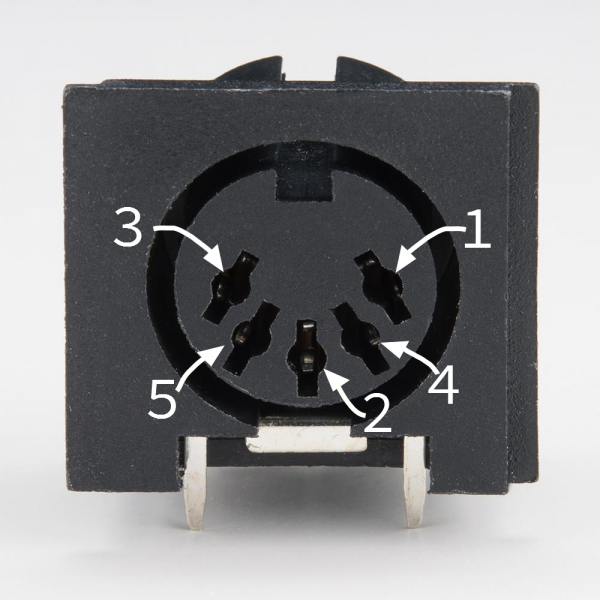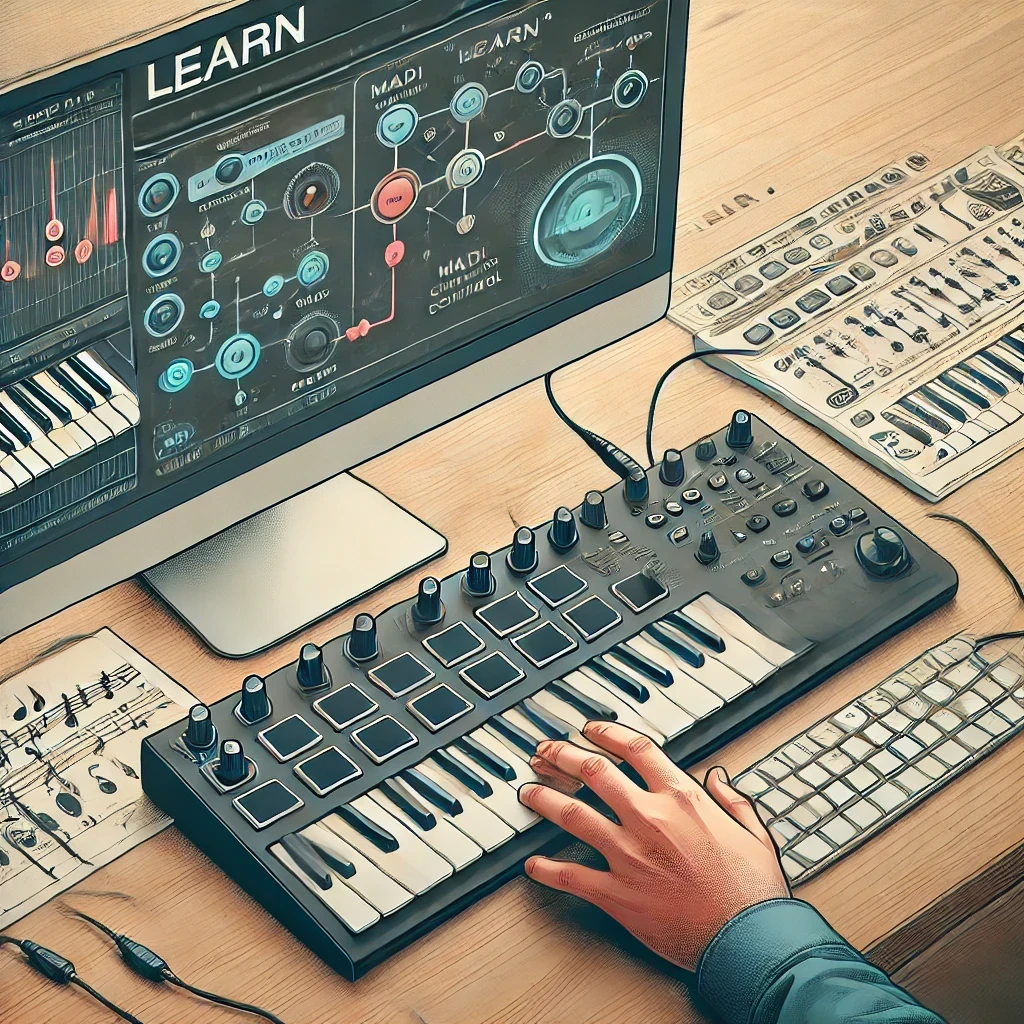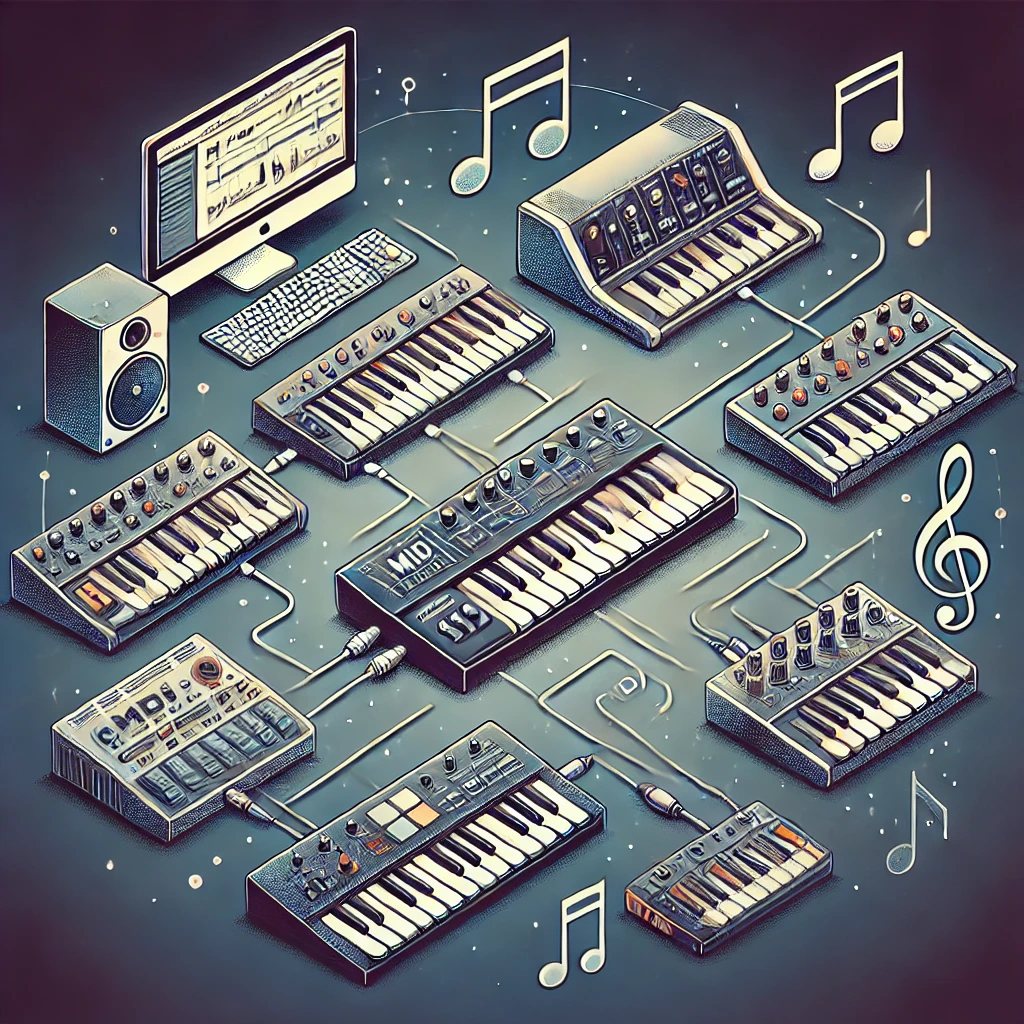
- Connect MIDI Devices
How to use these kinds of files in your keyboard and/or standalone midi sequencers.
What is a MIDI file?
MIDI is a means of communicating music information among synthesizers, keyboards, computers and other electronic sound equipment through digital messages. Unlike wave files, MIDI files do not contain any sound. Instead they contain commands that tell the receiving unit exactly what note to play, what sound it should be played with, how loud it is, and how long to hold the note on.
What this means is that when you get a MIDI file, you are getting a file that contains what the composer did on his keyboard. The file is fairly small because it contains no actual sounds or voice information. To play back this file you need either a keyboard with both a MIDI interface and a floppy drive or a computer with MIDI capable sound card.
Playing back a MIDI file.
Playing back a MIDI file is fairly simple to do. In most cases it is a matter of putting a disk that contains a MIDI file into the floppy drive of your keyboard, selecting the file to be played and playing it. Since MIDI is such a common standard, it truly is this easy.
Playing MIDI files is extremely simple, but getting the most out of the play back can take a little more work. Consider, for example, playing your MIDI file back on a PC with a standard sound card. You will quickly find that the sounds coming from your computer may be a little flat or lifeless compared when the same piece is played on a keyboard.
The reason for this is found in how sound cards work. Sound cards have a wave table IC that contains the sampled sound of many instruments. Due to the expense and work involved in sampling these sounds few standard sound cards contain sampled sounds that are even close to the quality found in most keyboards or sound modules.
A keyboard has been designed to reproduce high quality sounds. A sound card has been designed to produce sound, not necessarily “high quality”. So what can you do about this? The answer is simple, connect the MIDI output of your sound card, to the MIDI input on your keyboard, and set your computer to play the MIDI file out to the keyboard. Now when you play back the same musical piece, the keyboard will play it with its full sound compliment instead of using your low quality sound card sounds.
Also worth noting… there are available now, high quality sound cards with “synth” engines built into them. These cards are typically much more expensive than your average generic sound card though. Consult your local music store for more information about this.
How do I connect MIDI devices?
Connecting MIDI devices is a fairly simple task. The standard cable for MIDI is a 5-pin cable with a small round connector. This cable carries the digital commands from one unit to another.
To connect the MIDI devices start with the master unit. All MIDI units will have jacks labeled as IN, OUT and most have a THROUGH. Take a suitably sized MIDI cable and go from the OUT of the main unit to the IN on the slave unit. Then take a second MIDI cable and go from the IN of the first unit to the OUT on the slave unit. (Note: the Out from one unit cannot connect to the OUT of the other. This will not work. An OUT must always connect to an IN).
Now that the digital command links have been established you can begin to establish the audio connections. Start with the slave device and run a patch cable from the audio out to the audio input on your mixer or amp.
These simple connections are all that are required. Now you can use the main unit to cause any of the other unit(s) to play music as you see fit. Remember the shorter the cable run the better the signal quality will be. And it is not recommend to run more than 4 or 5 units in a MIDI chain as the signal can become weak and unstable.
Further details.
The exact details for playing back MIDI files on your keyboard, sequencer or drum machine will vary with different models. While the basic steps are usually the same, the best source of instruction is yours owners manual.
If your instrument has a disk drive, normally you would start by saving a MIDI file on a standard DOS formatted disk. After the file is saved, you insert the disk into the floppy drive on your digital instrument. Use the built in floppy drive controls to select the MIDI file on the disk and then select play.
Playing back a MIDI file on your PC may be slightly more complicated but still is very simple. The first step is to ensure that the MIDI drivers for your sound card or MIDI ports are installed and enabled. The information that came with your sound card will tell you how to this properly.
On a PC it is very common to use some sort of music editing software to play back or modify a MIDI file. Follow the manufacturer’s directions to install your music editing software and ensure that it works with your sound card.
Once the software and hardware are ready you can begin having fun. Insert the disk with the MIDI file into your PC’s floppy drive and open the file with your music editing software. The software will allow you to play or change the file as needed.
As you can see, thanks to industry standards, using MIDI files is fairly simple to do. You will be amazed with the possibilities that are opened up once you begin working with MIDI files.








